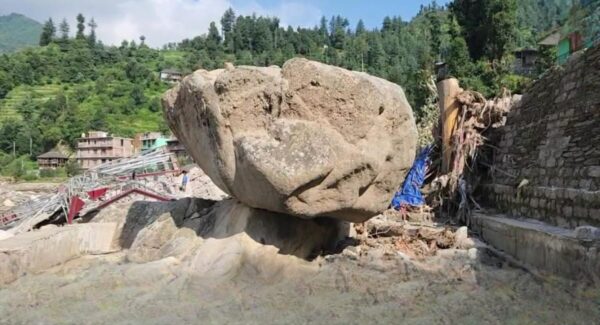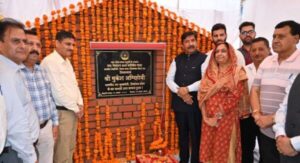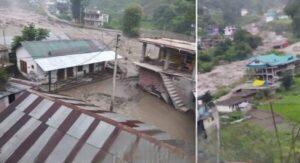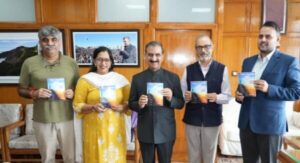Astonishing Sign of Faith: The “Pandav Shila” That Stood Firm Amid a Devastating Deluge

“Pandav Shila”
Mandi, August 4:
At a time when Himachal Pradesh has witnessed widespread destruction due to natural disasters, a few extraordinary moments have reinforced people’s unshakable faith in divine forces. One such instance was seen in the 2023 floods when the ancient Panchvaktra Temple in Mandi city was completely submerged—yet remarkably, not a single scratch appeared on the structure even though everything around it was ravaged.
This year, in Saraj as well, a similar tale of faith and resilience unfolded. Near Janjehli, the sacred “Pandav Shila”—a massive rock revered by locals—remained untouched by the disaster. What makes this even more remarkable is the long-standing belief that the rock can be gently moved with a single finger, yet refuses to budge even when pushed with full force. Thousands have witnessed this phenomenon firsthand.
How Did a Rock That Moves with a Finger Survive a Devastating Flood?
The mystery has left everyone who visits it pondering one question: How did a seemingly delicate, movable rock stay rooted during such a violent torrent? Local resident Ritik Thakur called it a living testament to their divine faith, saying, “This is a reminder that we live in Devbhoomi—land of the gods—where the deities themselves reside and protect us.”
Completely Submerged—Yet Unmoved
Former Chief Minister and Leader of Opposition Jai Ram Thakur also visited the site and recalled, “On the night of the disaster, the area experienced such intense flooding that the Pandav Shila was entirely submerged, with water flowing over it. Several larger rocks in the vicinity were swept away. Nearby houses were reduced to rubble. Yet the Pandav Shila remained exactly where it was, untouched. It’s nothing short of miraculous.”
The Legend of Bhim’s Dropped Sattu
A fascinating folk tale surrounds this sacred rock. Though not supported by historical records, the story holds deep significance for local communities. According to the legend, after the Kurukshetra war in the Mahabharata, the Pandavas were advised to cleanse themselves of the sin of war by seeking the blessings of Nandi the Bull. They journeyed to Vrindavan, only to find that Nandi had left.
Their search led them through several sacred locations in Himachal—Kuntabhyo, Rewalsar, Kamrunag—and eventually to the current site of Pandav Shila. During a rest stop here, the Pandavas were having a meal when a funeral procession passed by along the Bakhal Khad river. Seeing the procession, they abandoned their meal. At that moment, a ball of sattu (roasted flour) slipped from Bhim’s hands and landed on the ground—later believed to have transformed into the Pandav Shila.
A Rock of Wishes and Devotion
Over time, this rock became a powerful symbol of devotion and hope. A local ritual even emerged: people throw small stones onto the Pandav Shila to make a wish. If the stone sticks to the surface, it is believed the wish will come true.
At a time when much has been lost, the sight of the steadfast Pandav Shila has become a source of comfort and spiritual affirmation. It stands not just as a geological marvel, but as a silent guardian—an enduring symbol of faith in the heart of the hills.

Continuing the achievement of the journey of effectiveness and credibility of more than 10 years in the career of journalism, as a woman journalist, I am Serving as the founder, promoter and editor of DiaryTimes with the trust and support of all. My credible coverage may not have given a big shape to the numbers, but my journey presents articles that make you aware of the exact and meaningful situations of Himachal’s politics, ground issues related to the public, business, tourism and the difficult geographical conditions of the state and financial awareness. DiaryTimes, full of the experience of my precise editorial expertise, is awakening the flame of credible journalism among all of you, so that the eternal flame of meaningful change can be lit in the life of the people of the state and the atrocities being committed against the people can be brought to the fore, I am motivated for that. If even a small change comes with the power of my journalism and the whole world becomes a witness to that issues, then I will consider myself fortunate.





